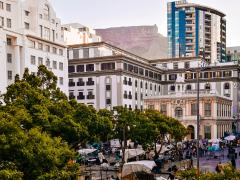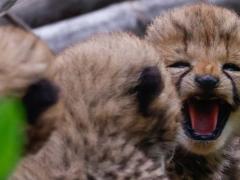Two of East Africa’s most celebrated natural sites, Mount Kenya National Park and Ngorongoro Conservation Area, have been downgraded in their global conservation status.
The International Union for Conservation of Nature (IUCN), in its Conservation Outlook 2025 report, has reclassified both sites from “good with some concerns” to “significant concern” citing growing environmental degradation, unsustainable human activity and climate-related pressures.
Mount Kenya
Kenya’s highest peak and Africa’s second tallest mountain, Mount Kenya, is facing a rapid decline in its ecological health. Once famed for its snow-capped peaks, the mountain is now suffering from accelerated glacier melt, deforestation and increasing human encroachment.
According to the IUCN, uncontrolled wildfires, illegal logging and livestock grazing have compounded the problem while poorly regulated water abstraction and planned dam projects pose additional threats.
Bainito Musumba, a Nairobi-based tour operator, said: “The shamba system, which allows farming in forest areas, has brought settlements dangerously close to the mountain vegetation.”
While conservation authorities such as the Kenya Wildlife Service and the Kenya Forest Service are trying to restore balance through fencing projects and ranger recruitment, their efforts are often undermined by limited funding and overlapping responsibilities. The IUCN report notes confusion about agency mandates and an urgent need to update the 2010-2020 Mount Kenya Management Plan.
The ongoing construction of a 450 km electric fence around the lower forest boundary, spearheaded by Rhino Ark, aims to curb human-wildlife conflict and illegal grazing. Yet incidents of elephant breakouts, livestock rustling and timber harvesting persist.
“Mount Kenya has changed a lot over the years. Massive deforestation has left parts of the forest bare and rivers that were once crystal clear now flow muddy with silt. The mountain’s ice is melting rapidly – a visible sign of environmental decline,” said Gaurav Bhandari, Director of Safiri Nasi Ltd.
“Yet it remains a popular destination drawing hikers, climbers and nature lovers from around the world. The Kenya Wildlife Service continues to make significant efforts to protect the area but improving infrastructure – particularly the Embu-Nanyuki road – could further boost tourism and make access to this iconic mountain much easier.”
Musumba added: “The closure of the iconic Mountain Lodge Serena reduced interest in mountain tourism. Without revenue from tourism, it’s becoming harder to sustain conservation efforts – the ecosystem is struggling to fund its own protection.”
Ngorongoro Conservation Area
Across the border in Tanzania, the Ngorongoro Conservation Area is also under growing strain. Once hailed as a model of coexistence between humans and wildlife, Ngorongoro is now grappling with overpopulation, overgrazing and an explosion of tourism infrastructure within the crater and surrounding zones.
The IUCN report warns that anthropogenic pressures, from increased livestock numbers to the rapid rise in tourist lodges and camps, are pushing the area beyond its ecological limits. Movement corridors for wildlife are being blocked, especially along routes linking the crater to Serengeti and Olduvai Gorge.
“Some of these threats are partially being addressed but the overall ecological integrity is at risk,” the report states. “Anthropogenic pressures, if combined with climate change, could cause irreversible degradation.”
The organisation also raised concerns about human rights issues linked to the voluntary relocation of communities from the area – urging Tanzanian authorities to uphold free, prior and informed consent principles and engage more closely with local populations in designing sustainable solutions.
Tourism, while a lifeline for conservation funding, is also emerging as a double-edged sword. The proliferation of lodges and camps, particularly in the Ndutu area, has led to habitat degradation and wildlife harassment. Species like cheetahs are increasingly vulnerable to tourist disturbance, which affects breeding and population recovery.
“There are now set times for game drives – after every two hours you must give way to others because of congestion,” said Musumba. “Ngorongoro still has its magic but too many hotels are spoiling its natural beauty.”
The IUCN findings come amid growing concern about Africa’s natural heritage sites – many of which face similar threats. However, examples from West and Central Africa — including Côte d’Ivoire’s Comoé National Park, once on the World Heritage in Danger list – show that recovery is possible when governments, communities and conservation groups work together.
“These successes demonstrate that, when local action is backed by genuine partnerships and regional commitment, even longstanding conservation challenges can be reversed,” says Dianne Kokkonidis of Wild Wings Safaris.
“There’s no silver bullet but collaboration and shared commitment to long-term goals are at the heart of lasting progress.”














